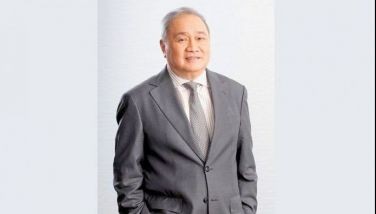Don’t waste a crisis
A return to the status quo ante chaotic bus service on Edsa and other major traffic corridors would be a horrible option to the public. Overcrowding at bus stops and aboard conveyances are anathema to the new normal. Health risk would be high and the cost penalty of a deficient public transportation system on society and the economy is far too high to tolerate, particularly at a time when people are ECQ-weary and the economy is in fragile state.
Metro Manila will soon transition to a new normal after the COVID-19 lockdown is lifted. There will be a gradual shift to a more normalized socio-economic life, albeit subject to health safety protocols. This situation presents challenges to the public transportation system given the need for social distancing that only an efficient and well-equipped system can provide.
There is an urgent need for a shift to a better post-COVID-19 bus system on EDSA to complement the MRT3 and for economic revival. The coming transition period with subnormal passenger demand will be a more manageable environment and ought to be productively used to introduce and pilot test a new bus transportation system. Don’t waste a crisis. If the pilot test result is satisfactory, the reformed system may be replicated in other major routes.
The Department of Public Transportation (DOTr) is capable of introducing bus service reform. But to effectively do so requires the cooperation and participation of the hundreds of bus operators who are accustomed to operating independently, instead of as a cohesive system as they should. Change is needed and they must be part of it.
The quickly doable, cost-effective and less disruptive solution is to mobilize and organize the individually franchised buses to operate as an orderly and efficient system, under prescribed rules and guidelines, managed by a government authority or private concessionaire. The latter service arrangement is a common practice abroad. This is a long-felt solution that had defied implementation for decades.
The objective of bus system reform is to optimize existing bus transportation resources and road space usage to attain the benefits of efficiency, reliability, predictability, orderliness and productivity with high passenger throughput, as well as lesser traffic congestion and air pollution.
These benefits can be achieved only with a government instituted management structure, while bus service operations may be outsourced to a private concessionaire under a service contract with existing qualified bus operators as sub-contractors or direct participants in a consortium setup, as the case may be. Outsourcing will promote inclusive participation, avail of core competence of existing operators and eliminate resistance to change, while minimizing capex cost, implementation time, operating complexity and project risk for DOTr.
Efficient bus systems abound in many cities abroad and are good models to follow and adopt. The essential elements are high capacity commuter conveyances, dedicated lanes for bus ways, adequate passenger platforms, bus operation management system, signal and communication system. These elements are found in municipal surface tram and bus rapid transit systems.
Dedicated lanes allow buses to run without interruption. Uninterrupted flow of buses is enhanced when the dedicated lanes are located at the inner or road median, instead of curbside, to allow conveyances to run unimpeded by other vehicles crossing its path when they turn to side streets or from them into the busway. The adjacent second lane, usually located at the stations, is used by express buses, including P2Ps, for passing the local service. Policy makers should consider shifting the existing two yellow bus lanes at curbside to the median.
EDSA, being equipped with overpasses that eliminates crossing at road intersections, is ideal for a bus system that adopts the concept of bus trains running without interruption similar to a bus rapid transit (BRT) system. This is a cost-effective solution to urban mass transit when rail is unavailable. BRT mimics the operating features of commuter trains, but utilizes high capacity commuter buses instead. After its introduction 47 years ago, there were 146 BRT systems operating worldwide in 2018 with over 30 million passengers carried daily. Guangzhou has such a system, while Jakarta has the longest line in the world.
Bus system reform can be implemented in phases. For quick results, the first phase may start with the organized buses operating on the existing yellow bus lanes. In phase 2, bus ways, ideally, should be shifted to the inner lanes and, accordingly, overhead passenger bridges be provided to connect the sidewalk to new passenger platforms at the median. Pending completion of the bridges, appropriately marked and protected at-grade crosswalks may suffice as a temporary measure. Anyway, EDSA has become a slow speed avenue, instead of a highway it once was because of many high-density mix-use developments along its route.
Phase 3 should see all civil works completed and the reformed bus system fully operationalized within the current Duterte administration. Special purpose high capacity commuter buses with low floors and PWD access may also be at hand, if acquisition is decided early on. This infrastructure is future proof as they will be useful for a transition to either a full-pledged bus rapid transit, rail-tram or the new technology trackless bus train running on special rubber wheels. All of these mass transit options can run on the same bus ways.
The recently enacted RA 11469 or Bayanihan Heal As One Act may be the source of emergency funding for this bus service reform. Under this law, the President is authorized to realign appropriations in the national budget and augment items in agencies of the Executive Department, including the DOTr. This bus reform program is needed to enhance and complement anti-COVID measures during post ECQ environment and is consonant with the purpose of the reformed budget.
Corollary to this, a paradigm shift in the allocation of road space is needed. Roads are finite and valuable resource of a city. In a densely populated metropolis such as Metro Manila, road space must be prioritized to move commuters while low occupancy private vehicles being secondary. Accordingly, commuter buses must have priority allocation of lanes, including on vehicular overpasses. Car-centric orientation is no longer appropriate.
Sidewalks on EDSA must be widened to accommodate the large number of pedestrians and commuters, and planted with trees to provide shelter from the heat, while creating a more friendly green atmosphere. The construction of more overhead structures over EDSA and its sidewalk, such as expressways and overhead walks, must be discouraged to eliminate visual intrusion, lessen vehicular traffic and allow redevelopment of EDSA into a pleasant and iconic tree-lined avenue.
It is about time for bus operators to act as constructive partners to assist the Department of Transportation in this vitally needed change for the better.
* * *
(Eduardo H. Yap is chair of the national affairs committee of the Financial Executives Institute of the Philippines (FINEX), former chair of the national issues committee and traffic and transportation committee of the Management Association of the Philippines (MAP), and author of the Holistic Approach to the Traffic and Transportation Problems of Metro Manila. Email to [email protected].)
- Latest
- Trending





























